Discover 20 hidden attractions, cool sights, and unusual things to do in Saarbrücken (Germany). Don't miss out on these must-see attractions: Zoo, Ludwigskirche, and Saarbrücken Castle. Also, be sure to include Basilica of St. John the Baptist in your itinerary.
Below, you can find the list of the most amazing places you should visit in Saarbrücken (Saarland).
Table of Contents
Zoo

Zoo in Saarbrücken, Germany. The Saarbrücken Zoo is with over 200.000 visitors annually, and over 1.700 animals from 160 Species the largest Zoo in Saarland. The Zoo is specialized in African animals.[1]
Address: Am Zoo, Saarbrücken (Mitte)
Ludwigskirche

Church in Saarbrücken. Ludwigskirche in Old Saarbrücken, Germany, is a Lutheran baroque-style church. It is the symbol of the city and is considered to be one of the most important Protestant churches in Germany, along with the Dresden Frauenkirche and the St. Michael's Church, Hamburg.[2]
Address: Am Ludwigsplatz 18, 66117 Saarbrucken (Mitte)
Saarbrücken Castle

Also known as: Schloss Saarbrücken
Castle in Saarbrücken, Germany. Saarbrücken Castle is a Baroque château in Saarbrücken, the capital of Saarland. It is located in the district of Alt-Saarbrücken on the left bank of the Saar. Earlier, a medieval castle and a Renaissance castle stood on the same site.[3]
Address: Schlossplatz 1, Saarbrücken (Mitte)
Basilica of St. John the Baptist
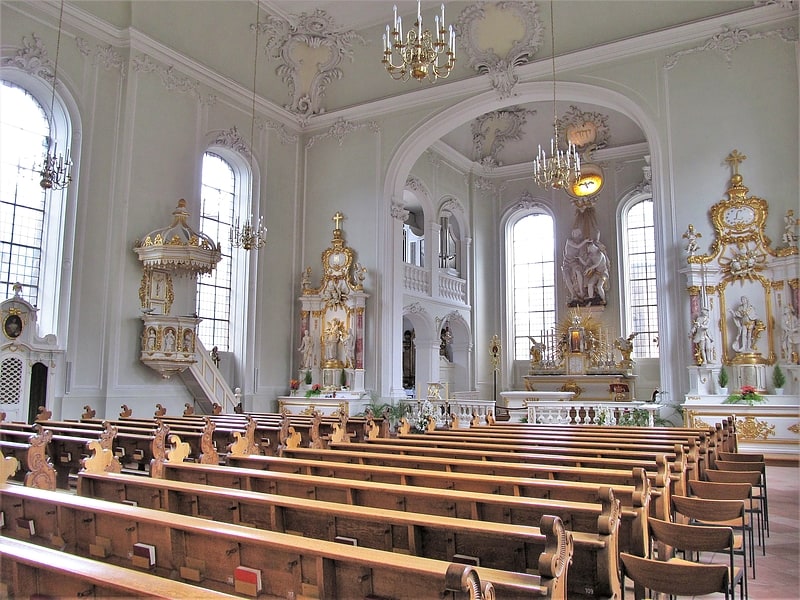
Also known as: Basilika St. Johann
Catholic church in Saarbrücken, Germany. The Basilica of St. John the Baptist also called Saarbrücken Basilica Is a catholic basilica located in the market of St. John in Saarbrücken in Germany.
The temple of St. John was administered at the time of the Reformation by a noble Protestant and only one chapel, the chapel of St. John, was assigned to those who remained faithful to the Catholic faith. In the eighteenth century, under the French government of Louis XIV, the Catholic population grew. Next, they financed the construction of a Basilica, which was the only religious building built on the site for a hundred years. The Basilica of St. John was built on the site of the chapel of the same name by the architect Friedrich Joachim Stengel between 1754 and 1758.
The Basilica was remodeled, destroyed and restored several times. The interior has been redesigned according to the original baroque between 1972 and 1975. The Basilica obtained its present name by a decision of Pope Paul VI, who made it a Basilica. The Basilica is part of a parish with five churches.
In addition to Catholic masses, organ concerts are regularly held.[4]
Address: Gerberstraße 31, Saarbrücken (Mitte)
Saarland Museum
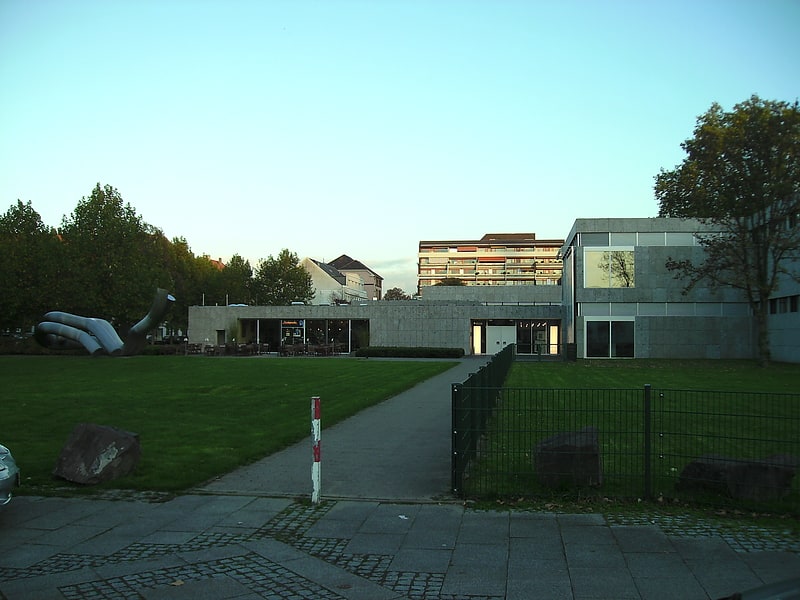
Also known as: Saarlandmuseum
Museum. The Saarland Museum is an art museum in Saarbrücken, Saarland, Germany. It is spread across three sites, each with a different specialism.[5]
Address: Bismarckstraße 11, 66111 Saarbrücken (Mitte)
Platz des Unsichtbaren Mahnmals
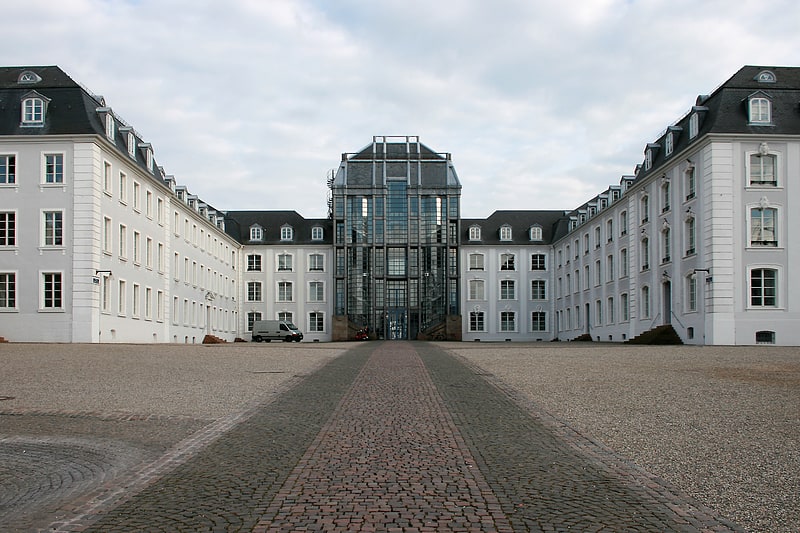
The Platz des Unsichtbaren Mahnmals – or in English, the Place of the Invisible Memorial – is a memorial to Jewish cemeteries. It is located in Saarbrücken, capital of the German state of the Saarland. To the visitor, the memorial is completely invisible – it only appears as a sign at the place, reading "Platz des Unsichtbaren Mahnmals".
In April 1990, art professor Jochen Gerz and several of his students began, in secrecy, to dig up cobblestones from the place in front of the Saarbrücken castle. The underside of the stones were then engraved with the names of German Jewish cemeteries, and afterwards they were returned to the place, with the inscription facing downwards. They chose the fore court of Saarbrücken Castle because a dependency of the Secret State Police, or Gestapo, was located in the castle during the time of national socialism.
In August 1991, the idea was taken up by the city council of Saarbrücken, and it decided to implement it legally. In the end, a total of 2146 location names of Jewish cemeteries, which had existed until their destruction by the Nazi regime in 1933, were engraved into the cobblestones, and again placed back into the fore court of the castle. The memorial intends to portray the neglect of the German past.[6]
Botanischer Garten der Universität des Saarlandes
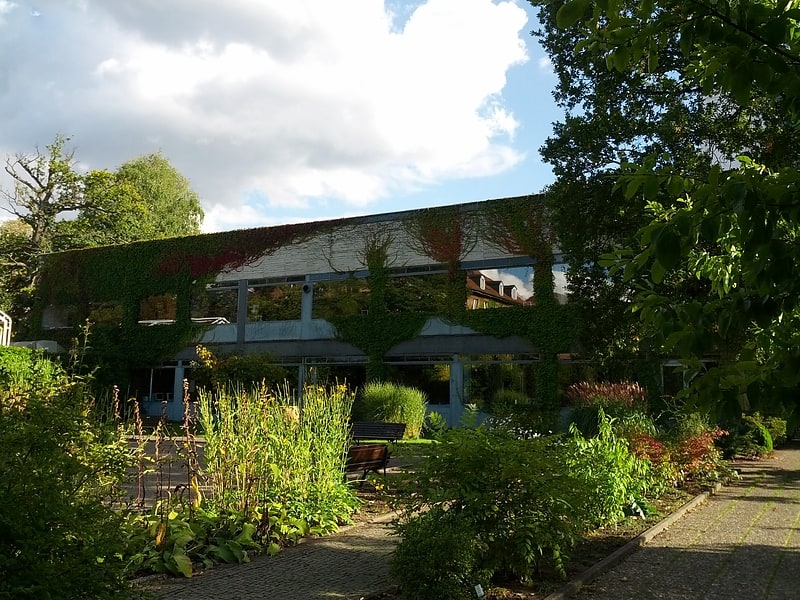
As of April 1, 2016 the garden has closed.
The Botanischer Garten der Universität des Saarlandes (2.5 hectares) is a botanical garden maintained by Saarland University. It is located on the university campus in Saarbrücken, Saarland, Germany, and is open Monday through Thursday, and Sunday in the warmer months, without charge.
The garden was founded in 1952 and currently contains about 2500 plant species, varieties, and hybrids. It contains greenhouses (1200 m²) as well as a medicinal plant museum of some 2500 accessions representing approximately 1000 taxa that illustrate the basic principles of various healing systems from around the world, including the traditional Indian system (Ayurveda), Chinese medicine, and African and Native American medicine and homeopathy.[7]
Hochschule für Musik Saar
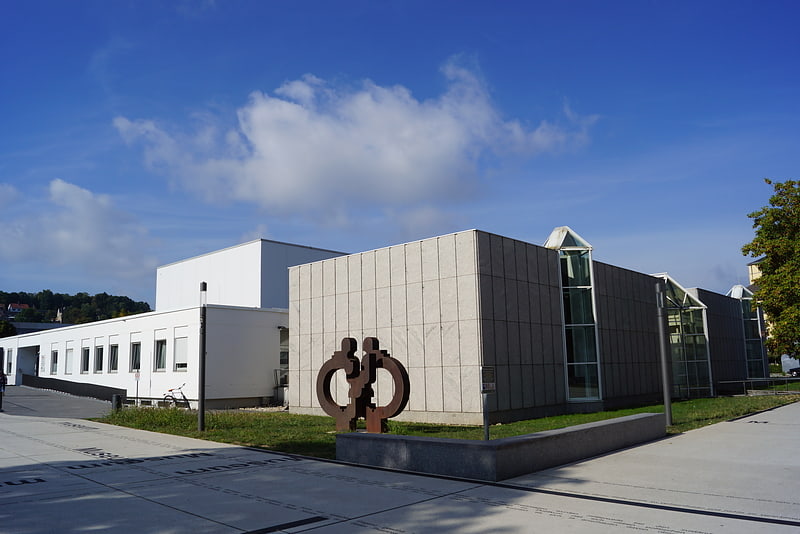
The Hochschule für Musik Saar is a conservatory of music in Saarbrücken, Germany and dates back to 1947. From 1994 until 2002, it was named Hochschule des Saarlandes für Musik und Theater. Since 2012, the rector is Prof. Wolfgang Mayer. As of 2019, approximately 450 students are enrolled and taught by 150 teachers in courses and classes for musicians and music teachers.[8]
Address: 1 Bismarckstraße, Saarbrücken (Mitte)
Congresshalle
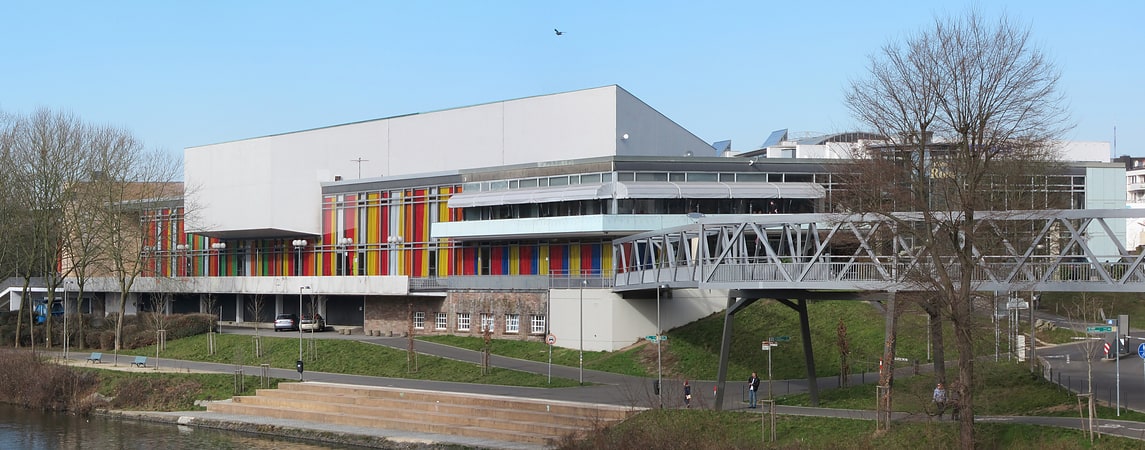
Event venue in Saarbrücken, Germany. The Kongreßhalle is a concert hall located in Saarbrücken, Germany, which was designed by German architect Dieter Oesterlen. The main hall can seat 1,300 and can hold 1,800 for standing events. The Kongreßhalle opened in 1967 and was expanded and moved to new premises in 1995.[9]
Address: Hafenstraße 12, Saarbrücken (Mitte)
Saarländisches Staatstheater
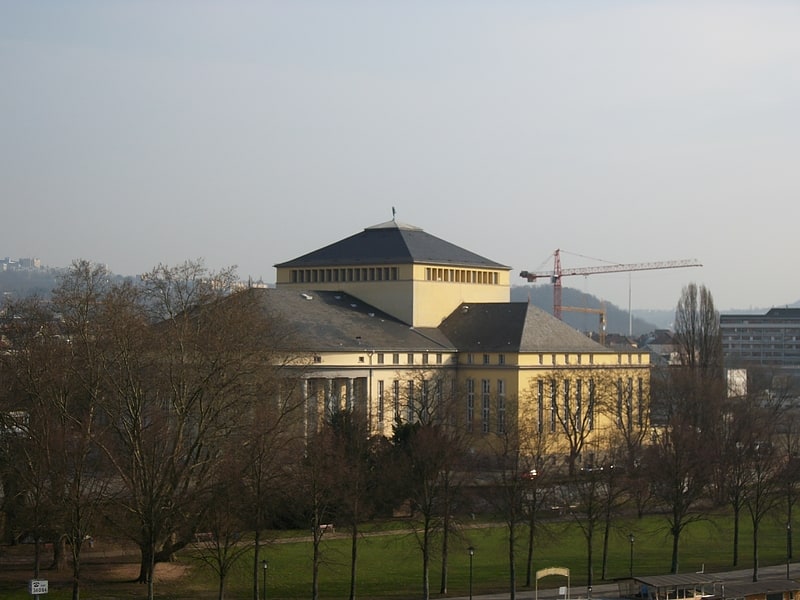
Theater Saarbrücken, officially Saarländisches Staatstheater since 1971, is the state theatre of Saarland in its capital Saarbrücken, Germany. It has several divisions and offers annually around 30 new productions in around 700 events for more than 200,000 people. Its venues are Großes Haus, Alte Feuerwache, Congresshalle and sparte4. While theatre in Saarbrücken has a long history, the present main venue was completed in 1938, with plans commissioned by the Nazi regime.[10]
Address: Schillerplatz 1, 66111 Saarbrucken (Mitte)
Deutsch-Französischer Garten
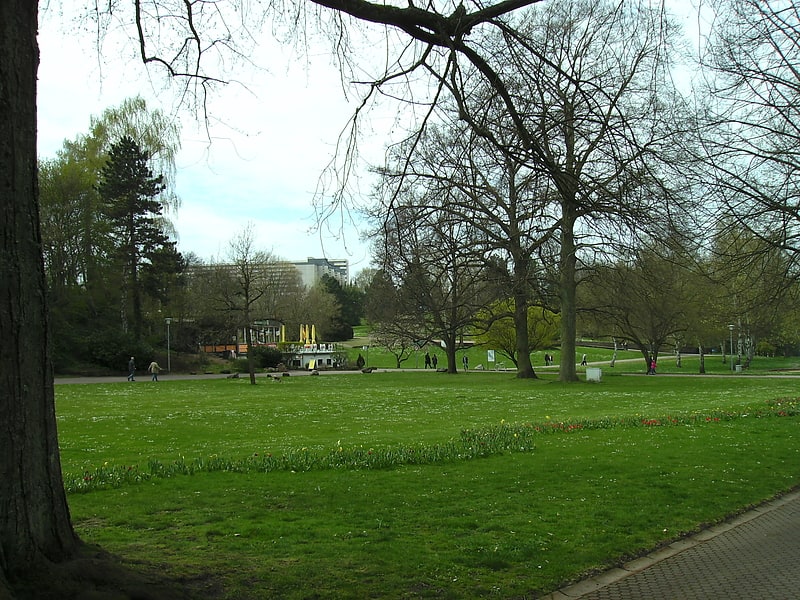
The Franco-German Garden is a landscape park in Saarbrücken with a number of entertainment facilities. It is used for local recreation.
Stadtgalerie Saarbrücken
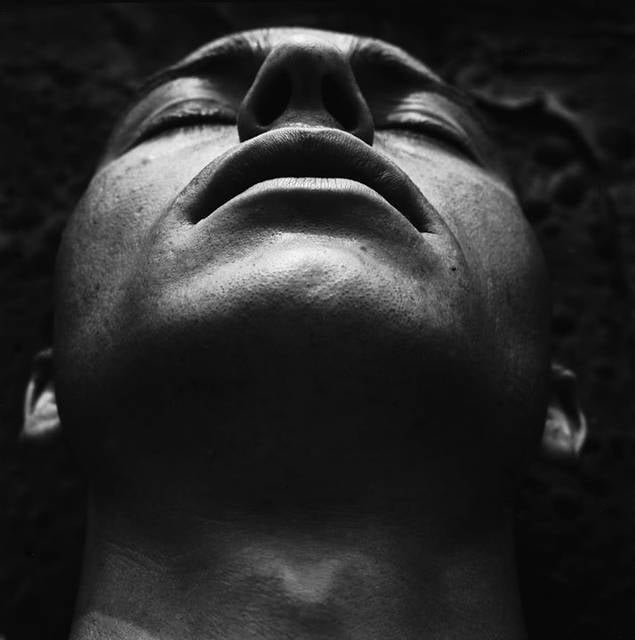
Museum
Address: St. Johanner Markt 24, Saarbrücken (Mitte)
Historisches Museum Saar
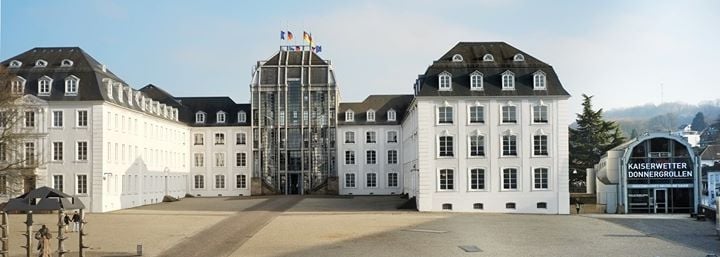
Museum, Specialty museum
Address: Schlossplatz 15, 66119 Saarbrucken (Mitte)
Alte Brücke
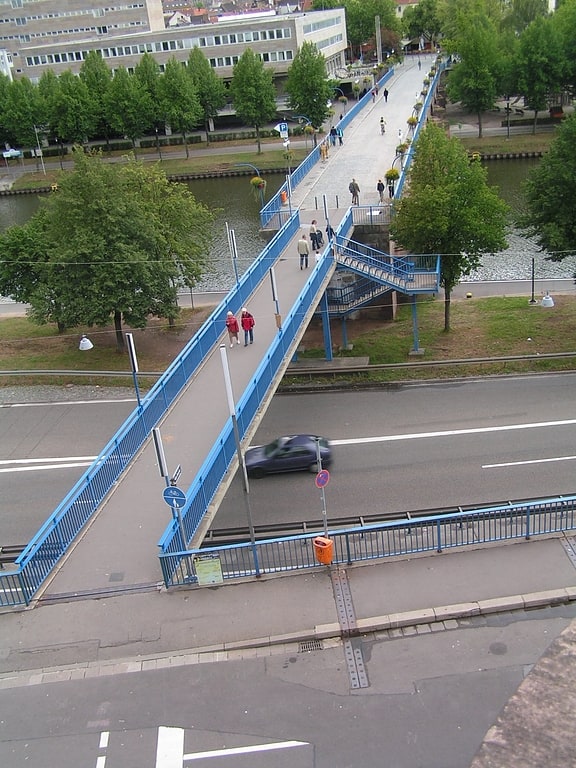
The Old Bridge over the Saar in Saarbrücken is the oldest preserved bridge in Saarland. It connects the districts of St. Johann and Alt-Saarbrücken and is open only for pedestrians and bicycle traffic.
The bridge is located in the immediate vicinity of the State Theater, St. Johanner Markt and Saarbrücken Castle.
It was built in 1546/49 under Count Philipp II after Emperor Charles V was unable to cross the river at this point for several days due to high water. After the Roman bridge a little further upstream, which fell into disrepair in the early Middle Ages, the Old Bridge was the first Saar bridge in centuries. It was destroyed and rebuilt at least twice.
In 1904, two of the central bridge piers were elaborately extended to make room for an equestrian statue of Emperor Wilhelm I, which was inaugurated on May 14, 1904 in the presence of Emperor Wilhelm II and Empress Auguste Viktoria. The Kaiser Wilhelm Monument had been designed by the sculptor and Rietschel student Adolf von Donndorf, who came from Weimar, based on the model of the monument at Hohensyburg Castle. Donndorf had received the commission through a good acquaintance with the mayor of Saarbrücken, Friedrich Wilhelm Feldmann. The monument, which cost over 137,900 marks to build, survived the partial blowing up of the bridge by fleeing German troops in 1945 and was taken down after the end of World War II on the orders of the French occupying power as a symbol of Prussian militarism. The positioning of the Emperor's monument on the bridge was modeled on the equestrian monument of Henry IV on the Pont Neuf over the Seine in Paris and the equestrian statue of the Great Elector on the former Long Bridge over the Spree near the Berlin Palace.
On the St. Johann side of the bridge, several of the original 14 arches were lost or filled in due to the construction of the Ministry of Finance and the creation of the square now called Tifliser (or Tbilisser). On the Old Saarbrücken side, too, one arch was lost in the course of a Saar straightening around the year 1763. Conversely, during the construction of the city highway (originally: B 406, today: A 620) from 1961 to 1963, the bridge on the Alt-Saarbrück side was extended with a steel footbridge, which bridges the highway at Leinpfad level. The castle wall built by Friedrich Joachim Stengel and bordering the castle rock was moved back 17 meters on this occasion and the directly adjacent historic Oberamtshaus, also built by Stengel, was demolished to make room for Franz-Josef Röder-Strasse, which also serves as a flood bypass for the city highway and to which the Old Bridge is connected on its southwest side. In the course of the canalization of the Saar River, which was decided in 1973, the Old Bridge was almost demolished because the clearance heights and widths of the bridge arches were not sufficient for European ships. However, it was decided not to extend the Saar expansion to the eastern port of Saarbrücken as originally planned.
In 2021, plans became known to comprehensively rehabilitate the Old Bridge, replacing the steel extension footbridge with a new structure.
The bridge is depicted on a definitive stamp from 1922, the stamps for "Stamp Day" in 1951 and on a special stamp from 1973.
Saarländisches Künstlerhaus
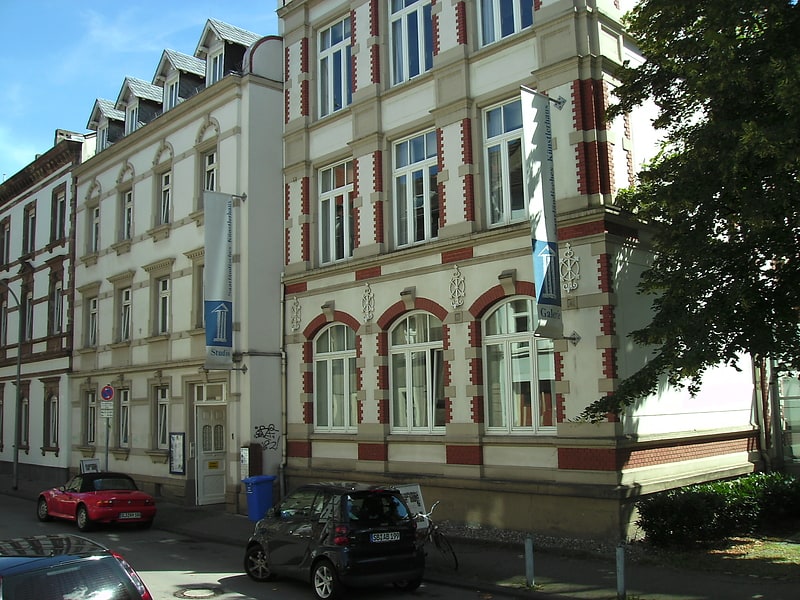
Saarländisches Künstlerhaus Saarbrücken e. V. is in the form of an association structure a working and meeting place for cultural workers from the fields of visual arts, literature and arts and crafts. The institution is based in Saarbrücken.
Address: Karlstraße 1, Saarbrücken (Mitte)
Ludwigsplatz
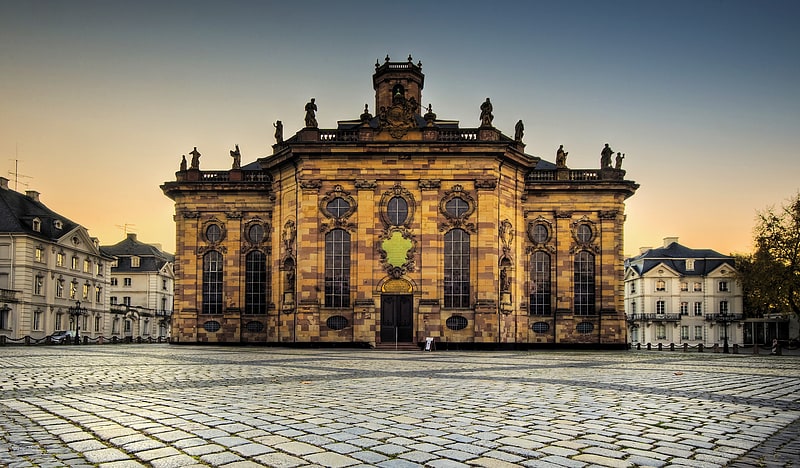
Also known as: Ludwigskirche
Ludwigskirche in Old Saarbrücken, Germany, is a Lutheran baroque-style church. It is the symbol of the city and is considered to be one of the most important Protestant churches in Germany, along with the Dresden Frauenkirche and the St. Michael's Church, Hamburg.[11]
Notkirche der evangelischen Gemeinde Alt-Saarbrücken

Church
Address: Spichererbergstraße 79, 66119 Saarbrücken (Mitte)
Old Jewish Cemetery
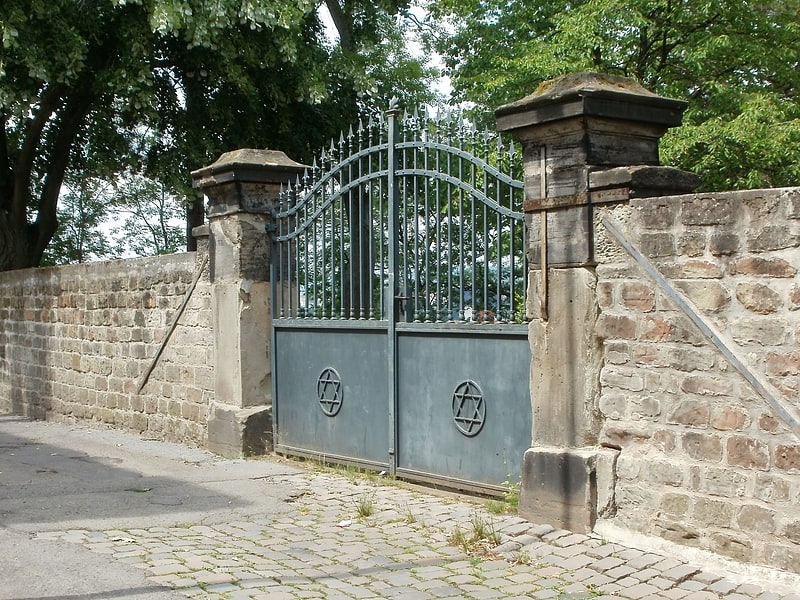
Also known as: Alter Jüdischer Friedhof
The Old Jewish Cemetery in Saarbrücken, the state capital of Saarland, was established in 1841. The Jewish cemetery on Graf-Simon-Strasse/corner of Komturstrasse is a protected cultural monument.
Saarlandhalle

Event venue in Saarbrücken, Germany. Saarlandhalle is a 5,500-capacity multi-purpose indoor arena located in Saarbrücken, Germany. Originally opened in 1967 with funds from Saarland Sporttoto for sports competitions, it was later converted to multi-purpose indoor arena. The Ludwigsparkstadion is located near the hall. Saarlandhalle is also the first indoor arena in Germany to be organized as a limited liability company.
It has hosted concerts by many famous artists, including A-ha, AC/DC, Chris de Burgh, Depeche Mode, Bob Dylan, Boney M. Metallica, Pink Floyd, Sting and Uriah Heep, among others. These days larger productions refrain from visiting it, as technical requirements have generally extended to a degree which the Saarlandhalle cannot meet any longer with its given specs. For example, since the introduction of the show's new stage set in 2001, the hall is too small to host Europe's largest televised show, Wetten, dass..?. In 2017 it hosted the 2017 German Darts Open.[12]
Address: Saarbrücken, An der Saarlandhalle 1, Saarbrücken, Germany
Pfarrkirche St. Michael
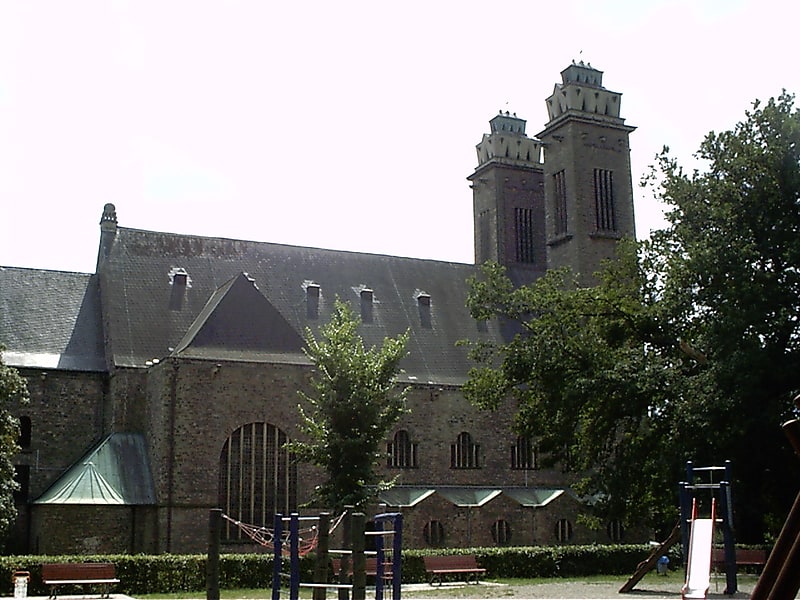
St. Michael is a Roman Catholic church in the St. Johann district of Saarbrücken, built between 1923 and 1924 according to plans by architect Hans Herkommer. Since then, it has been the largest church building in the Saarland capital in terms of interior floor space, ahead of the Lutheran Ludwigskirche. Along with the so-called Saardom in Dillingen/Saar, the St. Ingbert Josefskirche and the Malstatt Josefskirche, the Michaelskirche is one of the largest churches in the Saarland. The church is assigned to the diocese of Trier. The church's patron saint's day is the feast of St. Michael the Archangel on September 29.